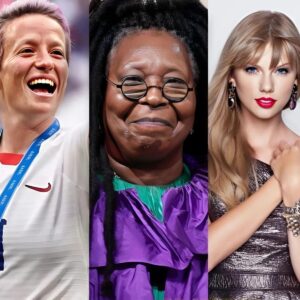
The Evolution of the WNBA Rookie of the Year Debate: Caitlin Clark vs. Angel Reese
The debate surrounding the WNBA Rookie of the Year award has become a focal point of sports media, with Caitlin Clark and Angel Reese emerging as the top contenders. This discussion, which has drawn comparisons to Michael Jackson’s iconic Moonwalk, symbolizes the apparent backtracking and shifting narratives within the sports media. This essay will explore the dynamics of this debate, the role of media in shaping public perception, and the broader implications for women’s basketball.
The Media’s Shifting Narrative
At the heart of the debate is the media’s role in framing the Rookie of the Year race. Initially, there was strong support for Angel Reese, with arguments centered around her contributions on the court, particularly in terms of plus-minus statistics and net rating. Reese’s ability to perform the “dirty work” in the game, such as rebounding and defending, was highlighted as essential, albeit less glamorous, aspects of her candidacy.
However, as the season progressed, the narrative began to shift dramatically in favor of Caitlin Clark. Clark’s exceptional performances, particularly her ability to rack up points and assists, started to overshadow Reese’s contributions. This shift in focus within the media has been likened to Michael Jackson’s Moonwalk—a metaphor for the apparent backtracking and change in opinion among sports commentators.
The Role of Advanced Analytics
One of the central themes in this debate is the use of advanced analytics to support different arguments. Initially, Reese’s supporters relied heavily on metrics like plus-minus and net rating to bolster her case for Rookie of the Year. These statistics, which provide a deeper look at a player’s impact beyond traditional box scores, were used to argue that Reese’s contributions, though less visible, were more valuable to her team.
However, as Caitlin Clark’s performances continued to impress, the same metrics were re-evaluated, and the focus shifted towards Clark’s ability to create plays and lead her team. Her high assist numbers, combined with her scoring ability, became the new standard by which the Rookie of the Year race was measured. This change in the analytical approach highlights how the interpretation of data can be influenced by broader narratives and media biases.
The Backlash Against Media Manipulation
The shifting narrative in the Rookie of the Year race has not gone unnoticed by fans and commentators. There has been significant backlash against what is perceived as media manipulation or gaslighting, where the narrative changes to fit a new agenda. Fans, particularly those who have closely followed the WNBA, have expressed frustration with the inconsistency in the media’s coverage of the race. This backlash underscores a broader dissatisfaction with how women’s sports are covered and the tendency to downplay or overlook certain achievements in favor of more marketable stories.
The comparison to Michael Jackson’s Moonwalk, with its illusion of forward movement while actually moving backward, is an apt metaphor for the way the media has handled the Rookie of the Year debate. It suggests that while the media may present itself as being objective and forward-thinking, it is often regressive in its treatment of women’s sports, reinforcing outdated stereotypes and biases.
The Broader Implications for Women’s Basketball
The Rookie of the Year debate is more than just a discussion about individual achievements; it reflects broader issues within women’s basketball and sports media. The shifting narratives and reliance on selective metrics reveal the challenges that women athletes face in gaining fair and consistent recognition. The debate also highlights the importance of transparency and honesty in sports journalism, as fans become increasingly aware of how narratives are constructed and manipulated.
Moreover, the intense focus on this race underscores the growing interest and investment in women’s basketball. The fact that fans and commentators are so engaged in the discussion about who deserves the Rookie of the Year award is a positive sign for the future of the sport. It shows that women’s basketball is gaining the attention and respect it deserves, even as it navigates the challenges of media coverage and public perception.
Conclusion
The debate over the WNBA Rookie of the Year award between Caitlin Clark and Angel Reese has revealed much about the current state of women’s basketball and sports media. While the shifting narratives and media manipulation have sparked controversy, they have also highlighted the growing importance of women’s sports in the public eye. As the WNBA continues to evolve, it is crucial that media coverage becomes more consistent, fair, and reflective of the true achievements of its athletes. Only then can we move beyond the illusions of the past and fully embrace the progress being made in women’s basketball.





